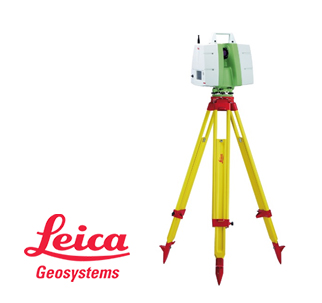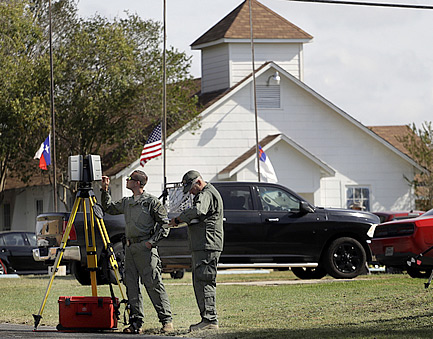A Gift of Historic Technology from Leica Geosystems
For more than 175 years the Texas Rangers have tested and implemented new, game changing technology. By the 1840s Anglo-European, Hispanic and Indian horseback skills and equipment were combined with Colt’s revolving pistols and rifles to create the Texas Ranger. In 1889 the Frontier Battalion Rangers employed dental records for identification. 1910 brought the first ‘high speed’ automobile pursuit—of a horse and buggy—by a Ranger, and in the 1920s the Rangers borrowed flying machines to spot illegal stills from the air and search for bank robbers. The 1930s brought the first appearance of primitive two-way radios mounted in cars.

In 2011 the Texas Rangers began applying state-of-the-art land surveying technology to criminal investigations. They borrowed a Leica Geosystems ScanStation C10 Laser Scanner which creates a permanent 360° digital photographic image and maps millions of laser data points to millimeter accuracy. This enables a single Ranger to make a precision 3D map of a crime scene in minutes. Before, a forensics team spent hours or days doing the same work with cameras and tape measures. Headquarters Ranger Lt. Troy Wilson states, “crime scenes can be complex, and the ScanStation provides prosecutors and juries with an easily understood depiction with unprecedented accuracy.” The results are so impressive that law enforcement agencies throughout the U.S. are using them.
The Texas Rangers are now equipped with twelve advanced model Leica scanners which have proven invaluable in complex criminal investigations. They recorded the 2014 Ft. Hood shooting crime scene for the US Army, the murder of five Dallas PD officers in 2016, the Sutherland Springs Church shooting in 2017, and the Austin bombings in 2018 among many others.

Texas Rangers utilize a Leica scanner following the Sutherland Springs Church shooting in 2017.
These laser scanners represent new and historic law enforcement technology, so we approached the Texas Rangers and Leica Geosystems about the possibility of acquiring an example of the C10 model first tested by the Rangers. It was quite a request given its value, but Leica Geosystems appreciates history and education. The roots of the company date back to 1819—just before the formation of the Texas Rangers.
Leica Geosystems has generously presented the museum with a fully restored ScanStation C10 and tripod. Important now, it is a priceless gift of history for future generations. We are grateful to Chuck Coiner and Tony Grissim of the Leica Geosystems Public Safety Group (former land surveyors) who made this possible. We are also indebted to Texas Rangers Lt. James Thomas of Co. F, Ranger Philip Kemp, of Co. E, and HQ Lt. Troy Wilson who facilitated contact with Leica and educated us about law enforcement uses scanning technology. The laser scanner will be displayed in 2019.
Many of the first Texas Rangers were surveyors and they mapped much of early Texas. Almost two centuries later the tradition continues in ways the early Rangers could never have imagined.
Please click here to watch a video on how the C10 scanner maps out crime scenes.
Please click here to watch an interview with Texas Ranger Jake Burson about the use of the scanner in the field.
